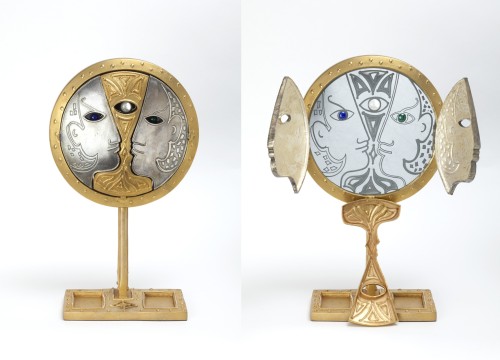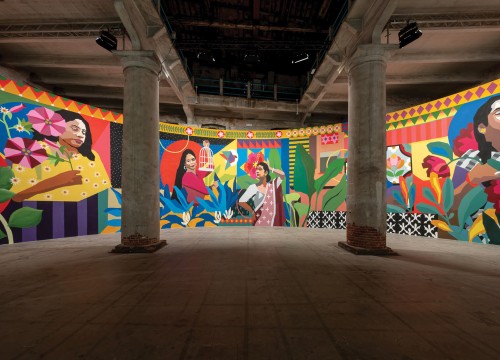With this new pictorial cycle, the artist pays homage to Vittore Carpaccio and Giovanni Mansueti
The past can suddenly come to light to re-knot the thread that binds us to that unconscious memory that nourishes our existence. It can happen to the gaze that in front of a masterpiece out of time can capture certain remote impulses stored in the unconscious. The exhibition “Capricci veneziani” by Marco Petrus, hosted until April 10th in the prestigious spaces of Ca’ Pesaro, in Venice, is a further proof. The event, curated by Michele Bonuomo and promoted by the MuVe Foundation in collaboration with M77 Gallery, is a tribute to the exhibition of Vittore Carpaccio at the Palazzo Ducale della Serenissima and paintings by Giovanni Mansueti exhibited in the rooms of the Gallerie dell’Accademia.
THE COMPOSITIONS CONQUER SPACE EXPANDING WIDELY ON CANVAS, IN A KALEIDOSCOPE OF SIGNS AND GESTURAL COMMUNIONS
A tribute, the one performed in numerous variations by Petrus, which takes as a pretext elements in appearance secondary, as the lines that characterized the interpreters’ breeches of the canvases of the two protagonists of the second ‘400 and the very first ‘500 Venetian, to be translated and exalted in abstraction to emphasize the rigor of execution and exhibit a renewed authenticity reflected and reiterated by the unexpected and exalted fragment. Bonuomo writes in this regard: “ Capricci are the point of view that Marco Petrus has above all on events that have made great and indispensable the tradition of Italian painting. The same one that today allowed him to find contemporary fragments in the crowded ‘theaters’ of Carpaccio and Mansueti...”. A reading confirmed in the catalog by Elisabetta Barisoni, the manager of Ca’ Pesaro, when she says that “the Capricci cycle envelops the visitor in a universe of repeated and regular textures where small variations and iconographic references are seen, but whose real protagonists are line and color.The result is an abstract composition, monumental in scale but not rhetorical and, in the end, anticlassical”.
The Milanese artist’s compositions conquer space and multiply, sometimes expanding widely on canvas, to offer us a kaleidoscope of signs and gestural communions that preserve the magical perception of those origins. On the other hand, Alberto Burri stated that if he had not admired the masterpieces kept in the churches of Città di Castello, in Urbino and Perugia, his famous “sacchi” (sacks) would not have been born. The numbers, then, return once again.




































